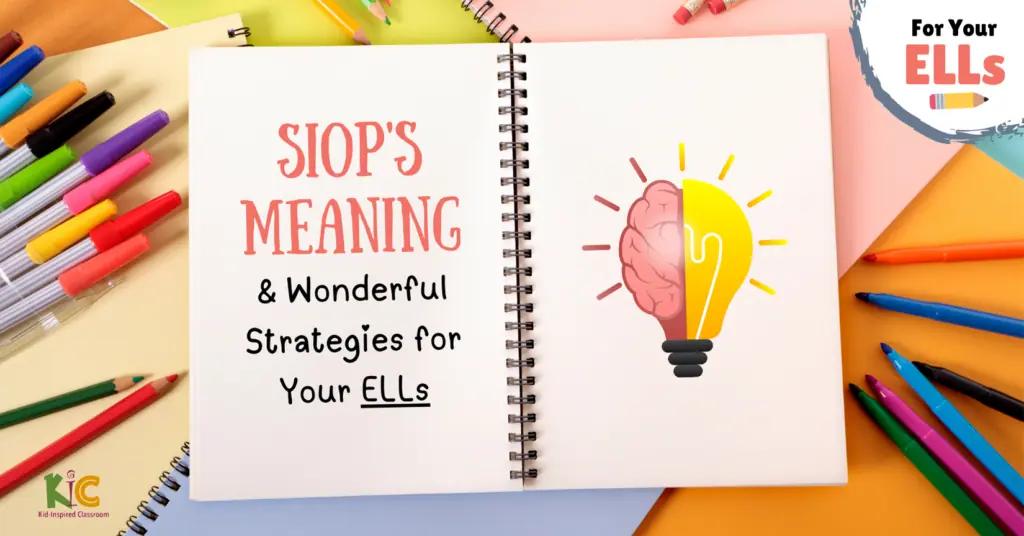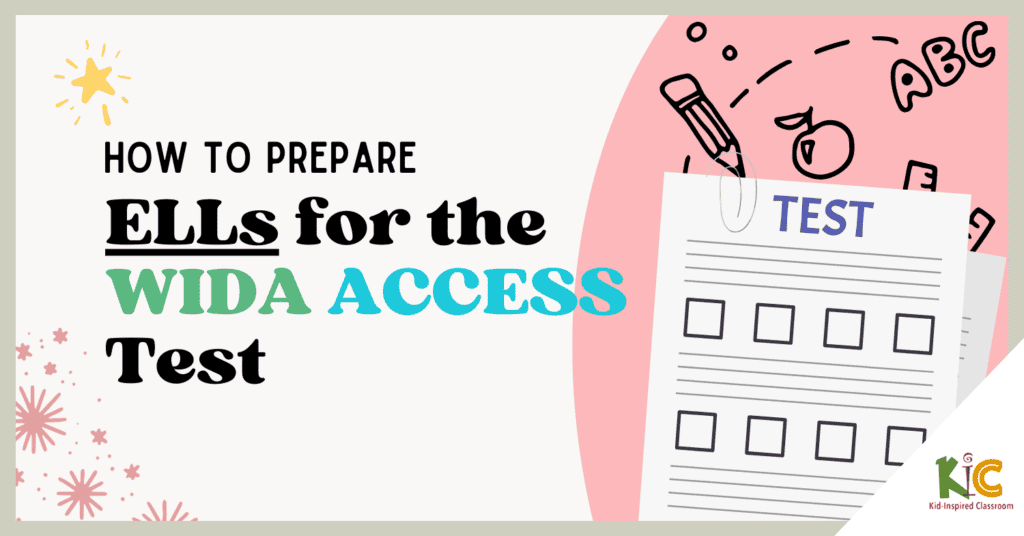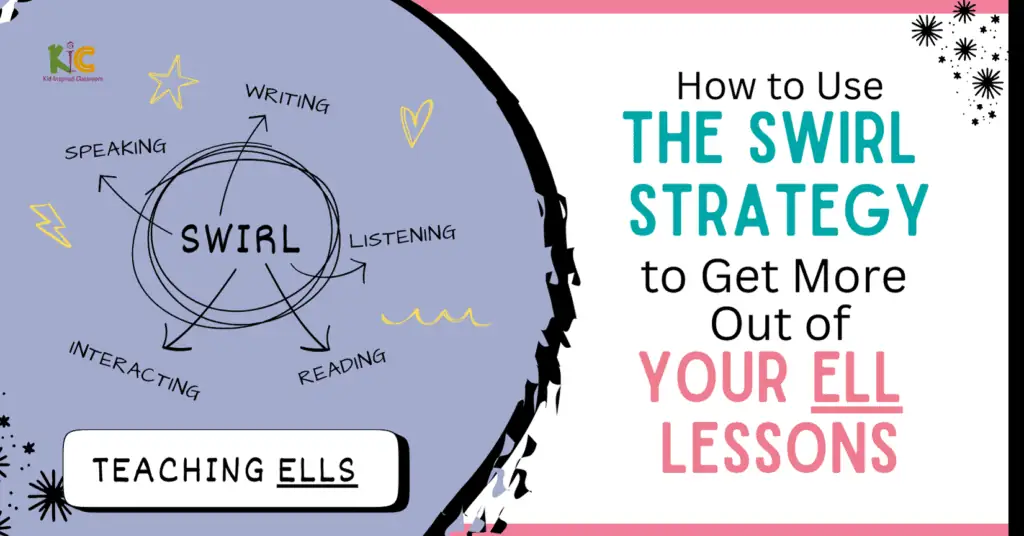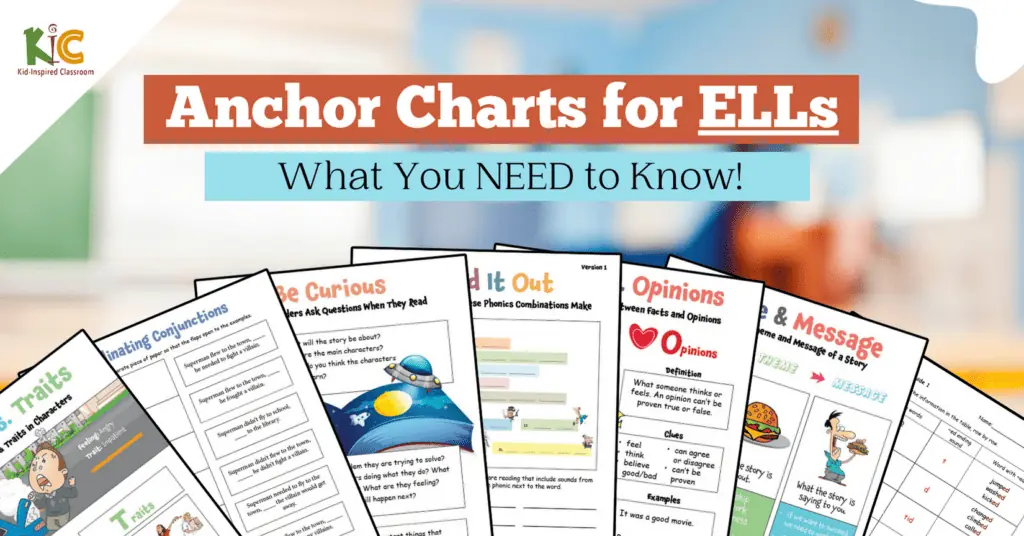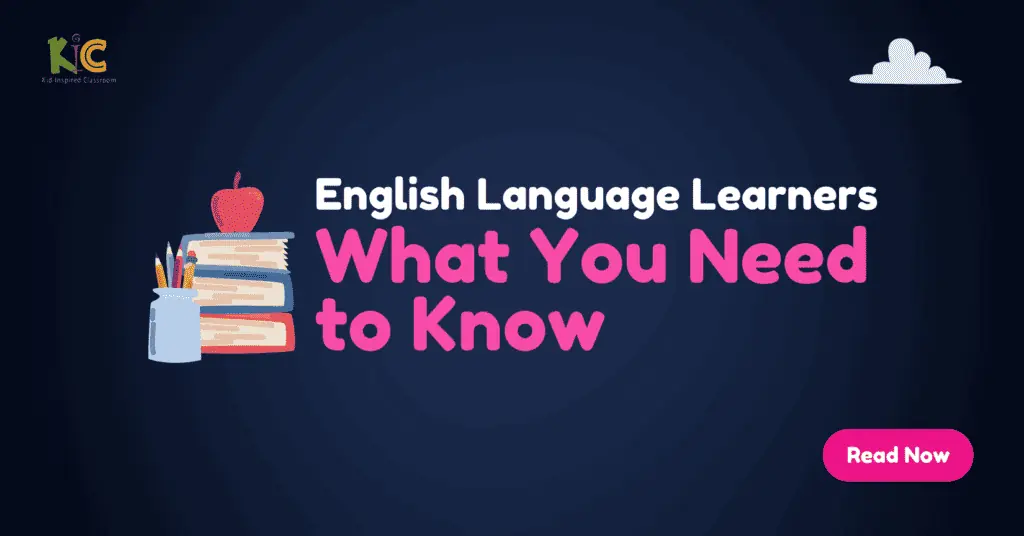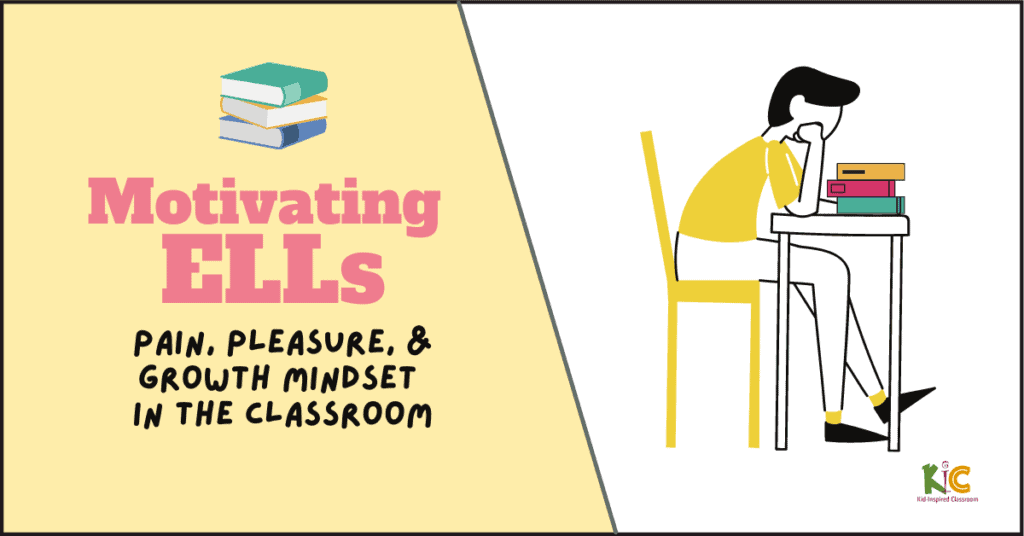
Some students like school and some students don’t.
What is the secret to turning our ELLs on to the love of learning?
It may have a lot to do with basic human nature.
Let’s take a look.
Ice Cream or Brussels Sprouts
For some children, school is a bowl of ice cream; for others, it’s a bowl of Brussels sprouts.
The same school, the same classroom, the same teacher can be dessert for one and nauseating for another; pleasure for the one and pain for the other.
Pleasure and pain can explain a lot about human behavior.
In his book Awaken the Giant Within, Tony Robbins talks a lot about pleasure and pain.
Our behaviors, according to Tony, can be traced back to avoiding pain or chasing pleasure. If we want to understand motivation, why people, why students in our case, do what they do, pain and pleasure are a good place to start.
We become wired to
- Avoid the things which we experience as painful
- Pursue the things which we experience as pleasurable
Usually this works to our benefit.
When my son takes a flying leap off of our couch and hurts himself, he hopefully gains a healthy respect for heights.
The problem is that we can wire things up badly too.
We can connect pain to good things and pleasure to bad things, usually unintentionally.
If my son, instead of gaining a fear of heights, gains a fear of couches, there is a problem. He could end up avoiding couches, only to jump off tables.
That would be ridiculous, of course, but we make equally ridiculous associations all of the time, without realizing it.
It is painful for some people to…
- See others laughing across a room
- See pictures of childhood
- See families spending time together at the park
- Walk into a classroom
- Lose at an otherwise friendly board game
Our students, especially our struggling students, but not only them, often have bad neuro-associations. They have linked feelings of pain to education.
Why Does It Have to Be So Hard?
Some students seem to find:
- Reading a book painful
- Writing a sentence excruciating
- Sitting in class torture
They start scribbling on their textbooks or stabbing their erasers to relieve the stress of it.
They are painfully unmotivated because learning is the neurally-associated equivalent of a flaming bag of dog crap on your porch: you thought it was one thing only to find out that it was something else entirely.
All children are making neuro-associations about learning from a very young age.
Some things are obviously harder for some children than others.
Some children are just naturally more gifted with a soccer ball than with a pencil.
For some children, even with help, remembering something seems painfully difficult, while for others remembering seems effortless.
Some children give the impression that they were already sitting properly and taking notes while still in the womb. Some children give the impression that they would rather go back to the womb than sit properly and take notes.
Math is a good example.
For some children, the numbers of a math problem smile playfully and order themselves into satisfying and obvious answers.
For other children, those same numbers taunt and mock and play mind games.
Unruly numbers and wrong answers cause frustration. These students are very likely going to associate some amount of pain with math and, to some degree, avoid it.
Nurture stands alongside nature, of course. The responses a child receives from…
- her parents
- her teachers
- Jimmy who sits behind her in algebra
…also inform her neuro-associations.
If she always feels stupid for getting those unruly equations wrong, then math is going to become even more painful.
We would all like to imagine that families support and nurture their children, but the fact of the matter is that even parents with the best intentions can often respond poorly to their children’s needs.
Even a well-intentioned parent or teacher can get frustrated with a child who doesn’t understand and continues to get something wrong.
We catch ourselves before we say something we regret, but with certain students, we sometimes sigh and look at them in exasperation.
I speak from experience.
The Story of Otis
I had a boy named Otis in my class once who struggled a lot with reading. I taught him how to read the word “the” multiple times a class for a semester and he would still forget it.
With a book in his hand, he wouldn’t even try to read unless I was sitting next to him, coaching him.
I worked really hard to keep my exasperation in check.
Together, we would practice a book over and over until he could eventually read it front to back without help, but he would flat-out refuse to take it home to read to his mom.
His mom was an honest woman.
When I would tell her about the situation, she would smile and laugh and speak frankly about her inability to control herself.
She wanted him to read perfectly and he of course never lived up to her expectations.
- The book was too easy
- Or he made too many mistakes
- Or he was reading too slowly
- Or he didn’t understand every word
She would force him to read for an hour until he was crying and she was screaming. She berated him regardless of how much effort or improvement he made, which, honestly, really wasn’t very much, but it was never enough.
When I read with him, I could see the pain in his face, the reluctance to read, the desire to do just about anything else instead, and the fear whenever I asked him if he wanted to take a book home.
There were many times when I wanted to yell at him myself.
“Seriously, you still can’t remember the word ‘the’?!”
How much harder would he have tried and how much more improvement would he have made if his experiences of reading had been more enjoyable?
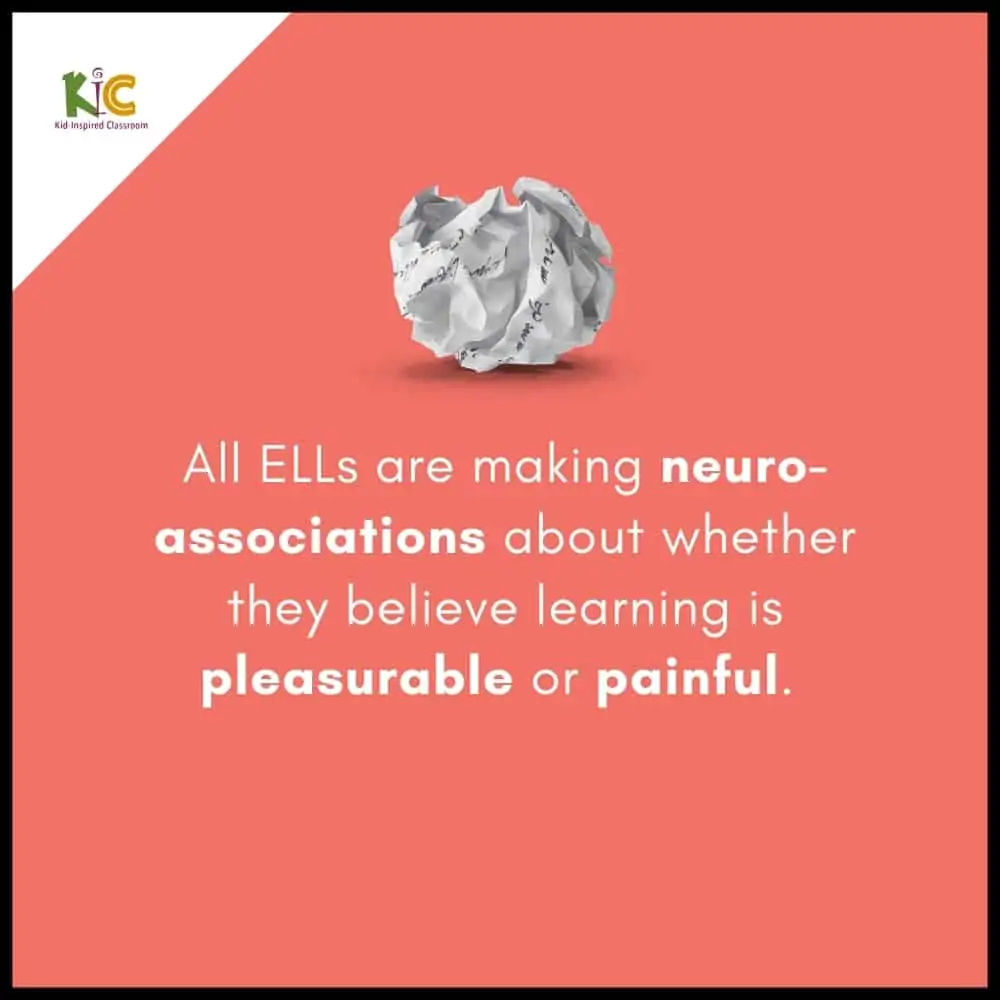
Getting Wired Up Wrong
There are so many ways a child can get wired up wrong even with the most well-intentioned teachers and parents.
- Some children feel like they are always letting the teacher down, or their parents down.
- Other children are yelled at by parents or ridiculed by classmates.
- Many receive disappointed or frustrated looks.
- Others are constantly getting everything wrong, always failing tests, and having to write and rewrite and write things again.
- Weaker students watch others glide past them effortlessly.
These things create painful or at least frustrating neuro-associations with learning.
So they avoid learning.
They goof off in class.
They stare at walls.
They doodle in their notebooks.
They bully others.
They put their heads down.
They proactively look for absolutely any other way of completing assignments or getting through class without actually having to learn anything.
It’s not as though they are unmotivated. They are motivated. Some of them work very hard to get out of the work. They make excuses, play dumb, go comatose.
Don’t lose hope, though. There are so many ways a child can get wired up right as well.
Growth Mindset
Some students are very motivated to learn. They have associated pleasure with learning. They have enjoyed learning about new things in the past and so they are curious to learn new things in the future.
It would be tempting to think that they were born that way, but I don’t think all of those good students are as naturally intelligent as everyone thinks they are. I don’t think they are so much more naturally intelligent than many of the weak or average students. I don’t think that many of the weak or average students are so naturally incompetent.
I think the more you practice learning, the better you get at it, and those students who put in a lot of effort seem particularly intelligent because it’s a practiced skill for them, the same as the child who can throw a curve ball across home plate.
There are certainly children who can’t throw a ball to save their lives and children who were born to throw a baseball, but anyone who is good at it, practiced at it.
Those who put in the effort usually succeed and they receive praise for their efforts.
The pleasure of that praise and the sense of accomplishment motivates them to continue working hard the next time.
Those who put in little effort usually fail and receive criticism or disappointment for their efforts.
The pain of that failure motivates them to stop trying. They avoid effort because they perceive the pain of trying to be greater than the pain of giving up.
To some important degree, most children have tried hard many times in their own various ways, but they have received very different responses from parents and teachers for their effort.
Many children, from a very early age, grow up in environments where…
- Their parents don’t have time, or don’t make time, to read with them regularly.
- They miss out on everyday background knowledge in science, math, and social studies because their parents never gained background knowledge in these things.
- They aren’t required to work hard at anything. Well-intentioned or overly busy parents do things for their children that they shouldn’t do and children learn that they don’t have to learn.
- Learning is made secondary and inferior to playing or watching TV, even if only by accident.
By the time these children get to the point where they have to remember something or learn something difficult, they are quite bad at it, not because they are unintelligent, but because they are unpracticed.
We can’t always avoid the bad neuro-assocations children make, but we can help change them.
We want them to associate learning with pleasure, not pain.
If a student enjoys learning, if learning is pleasurable for them, even if it is difficult, they will want to do it more.
Our Students Aren’t the Only Ones
If, as parents and teachers, we are honest with ourselves, we probably need to do some hard work on ourselves first. We get wired up badly too.
Difficult or struggling students can be difficult to teach and it is easy to think they are weak by choice.
As if, they decide each day not to live up to their potential, not to be like the strong students they are always being exhorted to imitate.
They are children.
They don’t, and very possibly can’t, make those kinds of decisions.
Most adults are incapable of making those kinds of decisions.
Most people, including children, simply react to what is happening around them rather than consider how it could be handled better.
As parents and teachers, we need to take a fresh look at our weak and average students, letting go of past baggage or assumptions, and considering how we might help those students create new neuro-associations with learning.
They certainly cannot do it alone.
Once we have started doing some work on ourselves, what can we do for our children?
It all starts with our beliefs.
Our Beliefs Shape Our Realities
Tony Robbins talks a lot about beliefs and how powerful they are in shaping our mental and even physical states. Beliefs are like the legs of a table he says. Life is the flat top and beliefs are the legs. The lives we live are defined by the beliefs we hold.
Every student has beliefs about
- Learning
- Education
- School
- Teachers
- what they enjoy and what they don’t
- What is fun what is not
- What is interesting and what is not
Our weak students, for whatever reason, very often believe that they are not any good at school.
These beliefs may be partly true, based on their natural ability, but they are also partly self-made.
We believe our realities into existence.
When students believe they are no good at school, they end up being no good at school.
If we believe a student can’t do something, we are going to put very little effort into helping them try.
Tiffany Haddish in her book the Last Black Unicorn talks of her struggles with reading. She says she simply didn’t believe she could do it. Everyone called her stupid and she believed them.

“I used to think I was stupid, so I wouldn’t even try.” — Tiffany Haddish
She is obviously not stupid, but the belief that she was caused her to give up.
Parents and teachers too believed that she was stupid and gave up on her.
If we can change students’ beliefs about learning, we can change their realities.
Again, that may, of course, require us to first change our own beliefs about some of our students.
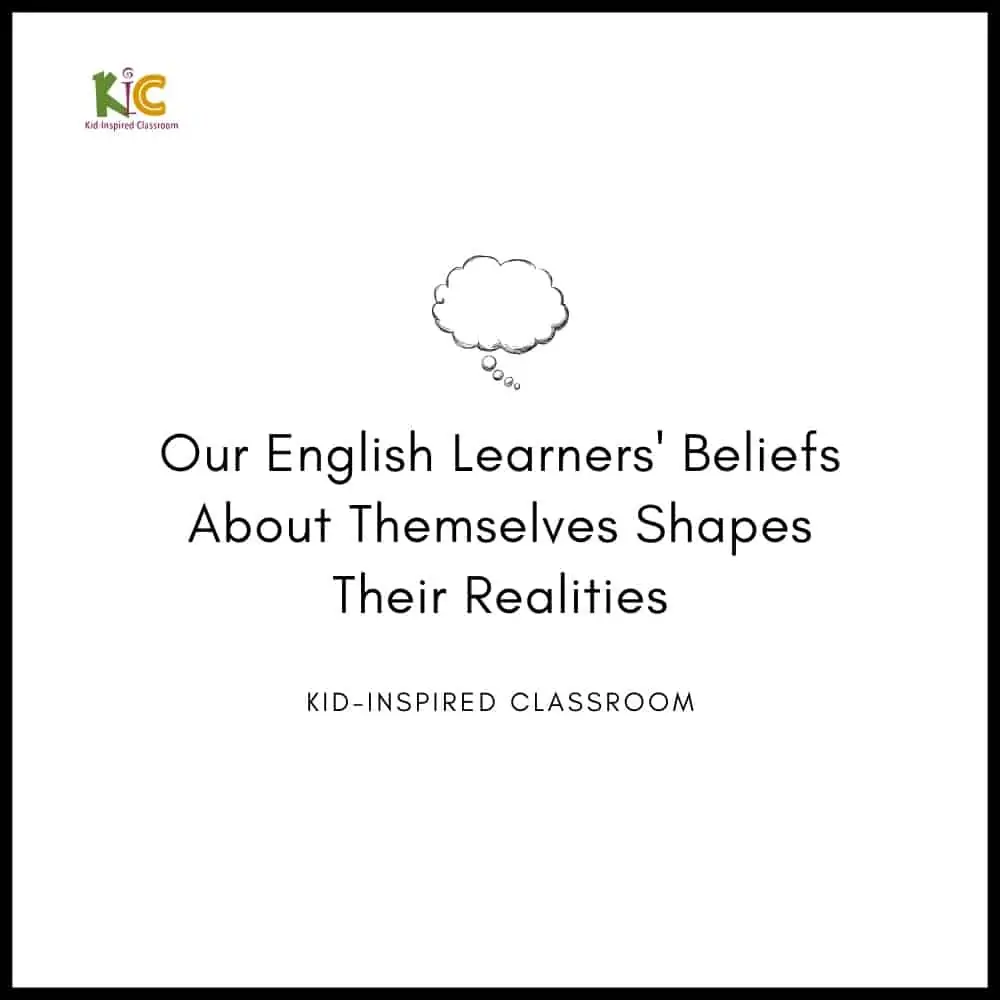
What Do We Do?
Here are a few ideas to get the conversation started. There are so many more.
1. Have fun.
If you are not happy, the students will not be happy. If you’re not enjoying yourself, your heart is not going to be in it. You have to find ways to avoid burnout, stress, anger and apathy. Learning is supposed to be interesting. It is one of life’s most amazing miracles. It’s easy to forget that. Find ways to enjoy teaching again. If you have never really enjoyed it, you’re doing it wrong.
If you’re not having fun, the students most likely aren’t either, unless it’s at the expense of your sanity. If they aren’t happy, they won’t work hard. Ninety-five percent of behavioral problems are the result of boredom. I highly value discipline in the classroom, but you can’t discipline students into learning. You can inspire them. You can make it so much fun that they don’t realize they are learning. But you can’t punish them into it.
We have to be creative then. We have to have lots of interesting activities. Most teachers try to come up with interesting activities, but they fall short of making a difference. Here are three keys to making your activities effective.
- Check out this article if you’d like to read more about designing effective activities.
- Here is a list of wonderful activities organized by language domain.
2. Build confidence.
If there is one thing I have learned, it’s this: the more confident a child feels, the more interested and motivated they are.
If you can increase their confidence, you can increase their interest.
When a child accomplishes something and receives praise for their efforts, they are flooded with good feelings.
Too often, we tailor the class to the strong students. We want to challenge them after all because they are our prize students and wouldn’t life be wonderful if everyone were like them.
By setting manageable goals tailored to the average student, everyone has a much better chance of achieving them. You can even break them down into even more manageable chunks for really weak students.
The more students accomplish little goals, the more confident they will feel and the more pleasure they will attach to working towards goals.
They will start rewiring their neuro-associations with learning the material.
Eventually, they will be able to work harder over longer periods of time for goals that are further off, but you have to start small.
3. Build mutual support and trust in the classroom.
Building solid relationships and connection in the classroom takes time and creative effort.
It won’t happen while reading from textbooks or completing assignments.
It will only happen when the teacher makes a considerable effort to get to know and connect with each child while also creating space for the students to get to know and connect with each other.
This often involves teaching things like conflict resolution which doesn’t need to be anything more complicated than the phrase I teach all of my students:
“Don’t fight. Paper, scissors, stone, please.”
You can solve almost any conflict with paper, scissors, stone.
It also means getting kids to spend time with students they don’t normally spend time with and coming up with activities that both facilitate good practice and “good feelings” to quote Oaken from the movie Frozen when he was offering a jar of Lutefish.
The more pleasure a student has while interacting with others, the more they feel like they belong, the more they will rewire themselves to enjoy the classroom and look forward to practicing the material.
4. Be in good communication with parents.
I always tell my teachers this well-worn phrase: The house always wins.
You can’t fight the home. Children spend a lot more time outside of your class than they do in it. If you don’t have parental support, you are going to have much less success rewiring a student’s associations with learning.
The better you understand what’s happening at home, the better you’ll understand what’s happening in the classroom.
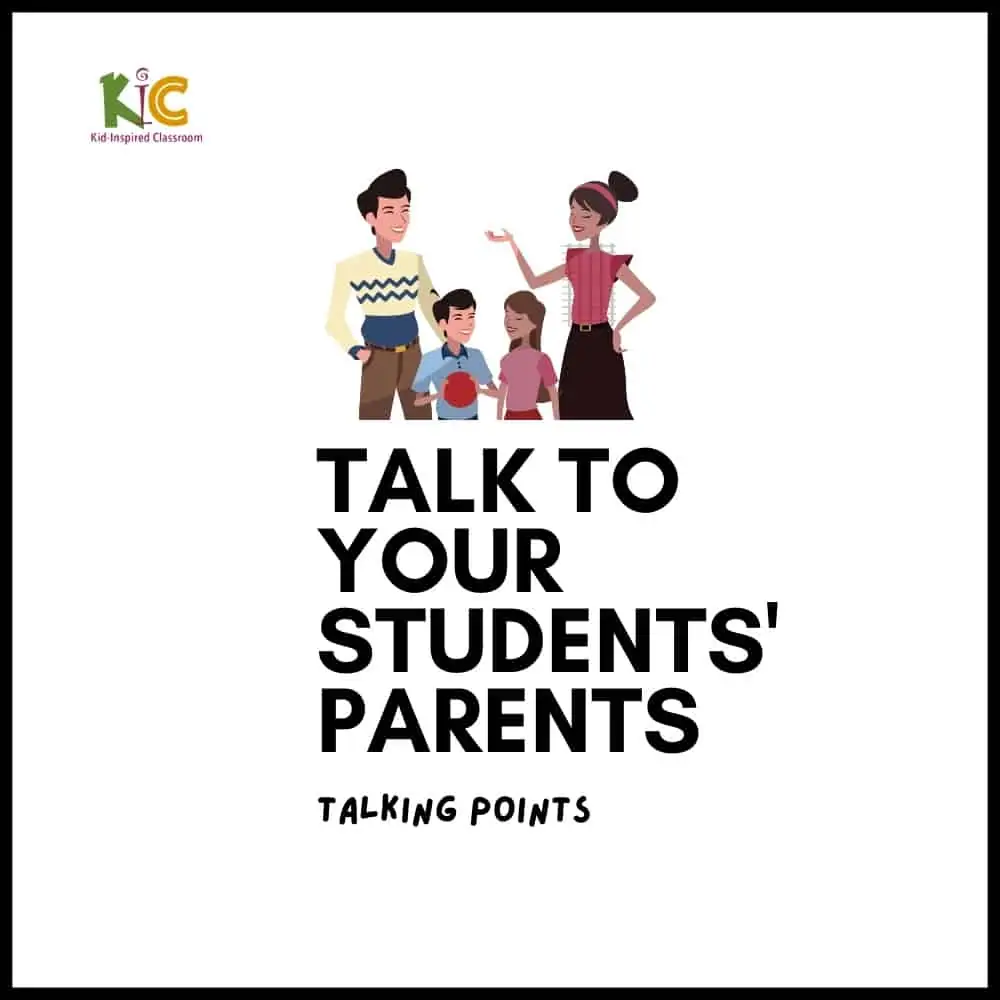
If you can be on the same page with parents and they can be continuing the same methods at home that you are using in the classroom, you can make an enormous difference in a child’s life.
Obviously, you are not going to be able to start dictating to a parent how they should be raising their children. The best thing you can do is listen.
Call them, schedule a meeting with them, visit them at home and listen to them.
You can even use a program like Talking Points to help communicate with parents who don’t speak the same language.
What problems are they seeing? What is frustrating them?
Very likely, the parents are having the same problems at home that you are having in the classroom.
After listening, ask the parents what they do at home because you want to be consistent with their child. Very often, parents don’t have a good answer to this one which means they probably just yell a lot or ignore the problem.
You can also tell them there are a few things you are trying at school and you are wondering if the parents would be willing to try the same things at home.
Parenting is as difficult as teaching, if not more so.
Most parents love the idea of helping their child be more motivated with school work, and as long as they don’t feel judged, are willing to cooperate.
Where to from here?
This is obviously only scratching the surface. There are so many ways we can start thinking about rewiring our students’ associations with learning.
And we may need to also be thinking about rewiring our own ideas about learning.
The students who succeed in the future will be those students who learn lifelong.
Only those people who love learning will continue learning when they are not required to.
Those are the people who are going to shape our world in the years to come.
What ideas or thoughts do you have? Leave your comments below. Let’s keep the conversation going.
